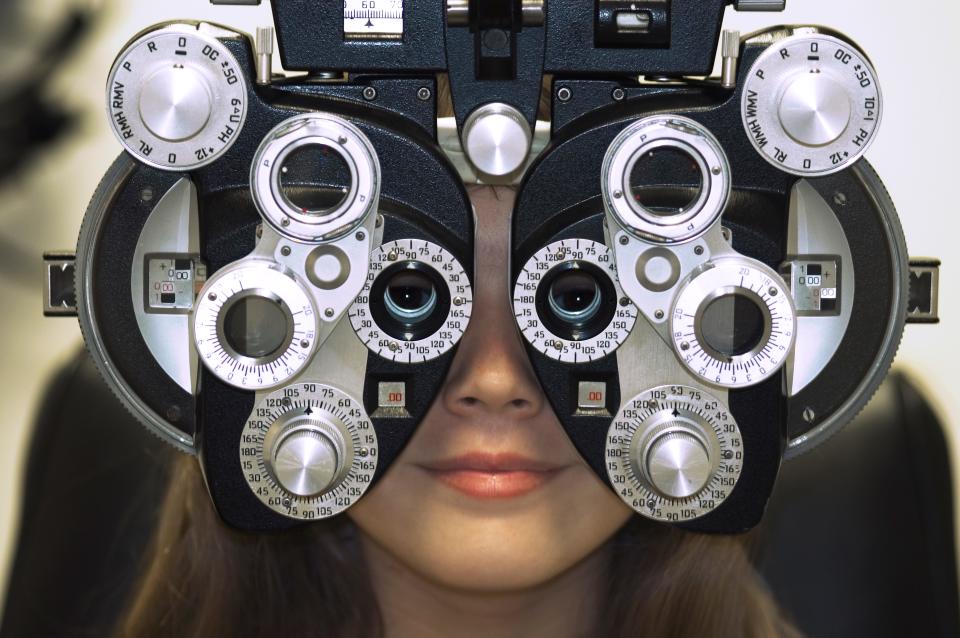What to know about your vision and glaucoma awareness | Mark Mahoney
I am acutely aware of the importance of maintaining good vision to the extent possible. I had the unique opportunity in the 1980s to work for an international not-for-profit organization, Project ORBIS, with a focus on blindness prevention activities around the world.
One important issue to be aware of in terms of potential causes of vision loss is glaucoma. It is sometimes called the “silent thief of sight” because it slowly damages the eyes and can cause irreparable harm before there is any vision loss.
Glaucoma on the rise
The worldwide prevalence of glaucoma is increasing. This is due in part to the rapidly aging population. Glaucoma is a leading cause of vision loss and blindness in the United States and Florida, with its aging population, is no exception.
Glaucoma has no early symptoms — that’s why half of people with glaucoma don’t even know they have it.Anyone can get glaucoma, but some people are at higher risk, including people who:
• Are over age 60
• Are Black/African American and over age 40
• Are Hispanic/Latino
• Have a family history of glaucoma
What are the types of glaucoma?
There are many different types of glaucoma, but the most common type in the United States is called open-angle glaucoma — that’s what most people mean when they talk about glaucoma. Other types are less common, like angle-closure glaucoma and congenital glaucoma.
What are the symptoms of glaucoma?
At first, glaucoma doesn’t usually have any symptoms.
Over time, you may slowly lose vision, usually starting with your side (peripheral) vision — especially the part of your vision that’s closest to your nose. Because it happens so slowly, many people can’t tell that their vision is changing at first.
But as the disease gets worse, you may start to notice that you can’t see things off to the side anymore. Without treatment, glaucoma can eventually cause blindness.
What causes glaucoma?
Scientists aren’t sure what causes the most common types of glaucoma, but many people with glaucoma have high eye pressure — and treatments that lower eye pressure help to slow the disease.
There’s no way to prevent glaucoma. That’s why eye exams are so important — so you and your doctor can find it before it affects your vision.

How will my eye doctor check for glaucoma?
Eye doctors can check for glaucoma as part of a comprehensive dilated eye exam. The exam is simple and painless — your doctor will give you some eye drops to dilate (widen) your pupil and then check your eyes for glaucoma and other eye problems. The exam includes a visual field test to check your side vision.
What’s the treatment for glaucoma?
Doctors use different types of treatment for glaucoma, including medicines (usually eye drops), laser treatment, and surgery.
If you have glaucoma, it’s important to start treatment right away. Treatment won’t undo any damage to your vision, but it can stop it from getting worse.
Talk over your options with your doctor. While glaucoma is a serious disease, treatment works well. Remember these tips:
• If your doctor prescribes medicine, be sure to take it every day
• Tell your doctor if your treatment causes side effects
• See your doctor for regular check-ups
• If you’re having trouble with everyday activities because of your vision loss, ask your doctor about vision rehabilitation services or devices that could help
• Encourage family members to get checked for glaucoma, since it can run in families
Get regular eye screenings
Please be proactive in undertaking regular screenings for this disease and seeking treatment at the earliest time possible through appropriate treatment from your doctor who specializes in eye care.
Be proactive in being observant on potential signs of glaucoma with your family, friend & colleagues. Remember that vision loss from glaucoma greatly impacts the independence of many people who are part of our rapidly aging population, especially relevant for our state of Florida.
Thanks to the National Eye Institute (NEI), and its National Eye Health Education Program for much of the information provided in today’s column.
Additional Information
A handout on glaucoma can be downloaded from the NEI at nei.nih.gov.
An EyeQ test to find out how much you know about glaucoma is available at nei.nih.gov.
A good resource for talking with your doctor about glaucoma can be accessed at nei.nih.gov.

Mark A. Mahoney, Ph.D. has been a Registered Dietitian/Nutritionist for over 35 years and completed graduate studies in Nutrition & Public Health at Columbia University. He can be reached at marqos69@hotmail.com.
This article originally appeared on Tallahassee Democrat: What to know about detection, treatment for glaucoma

